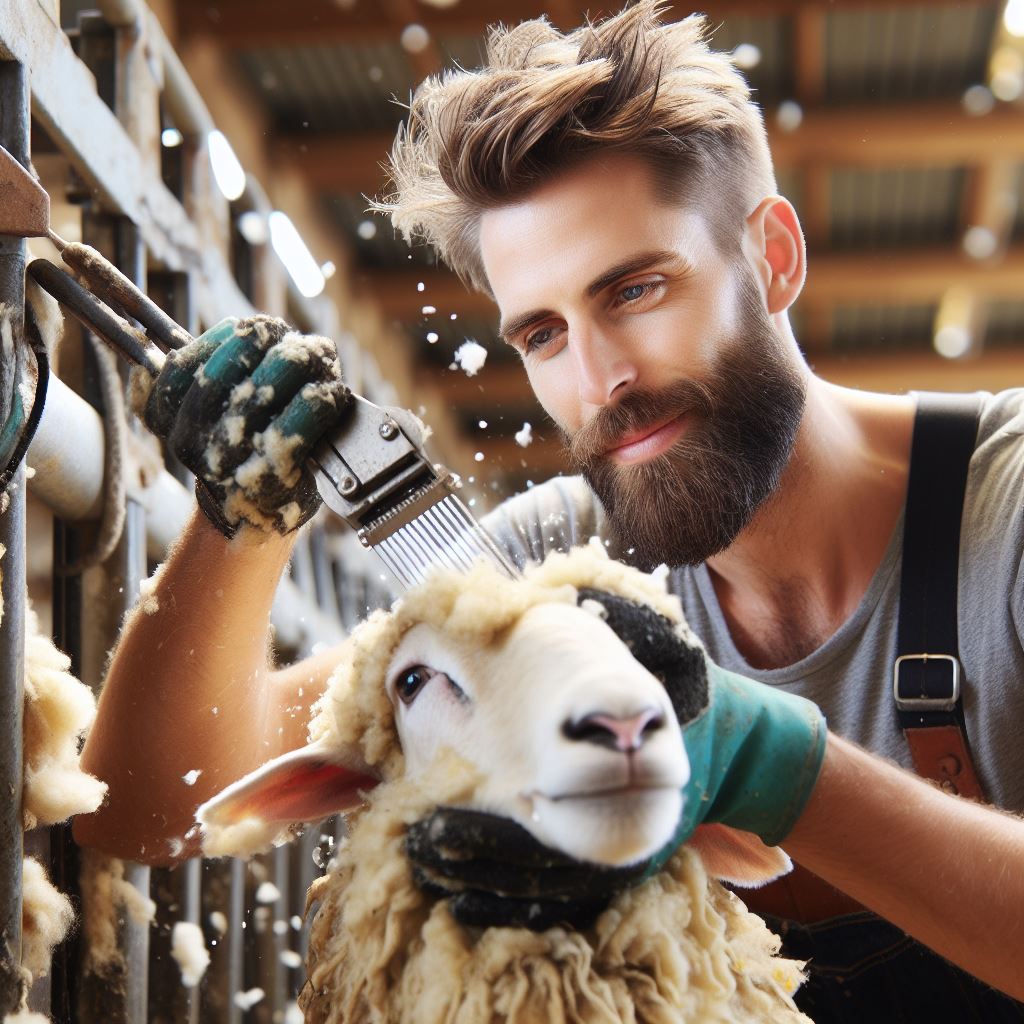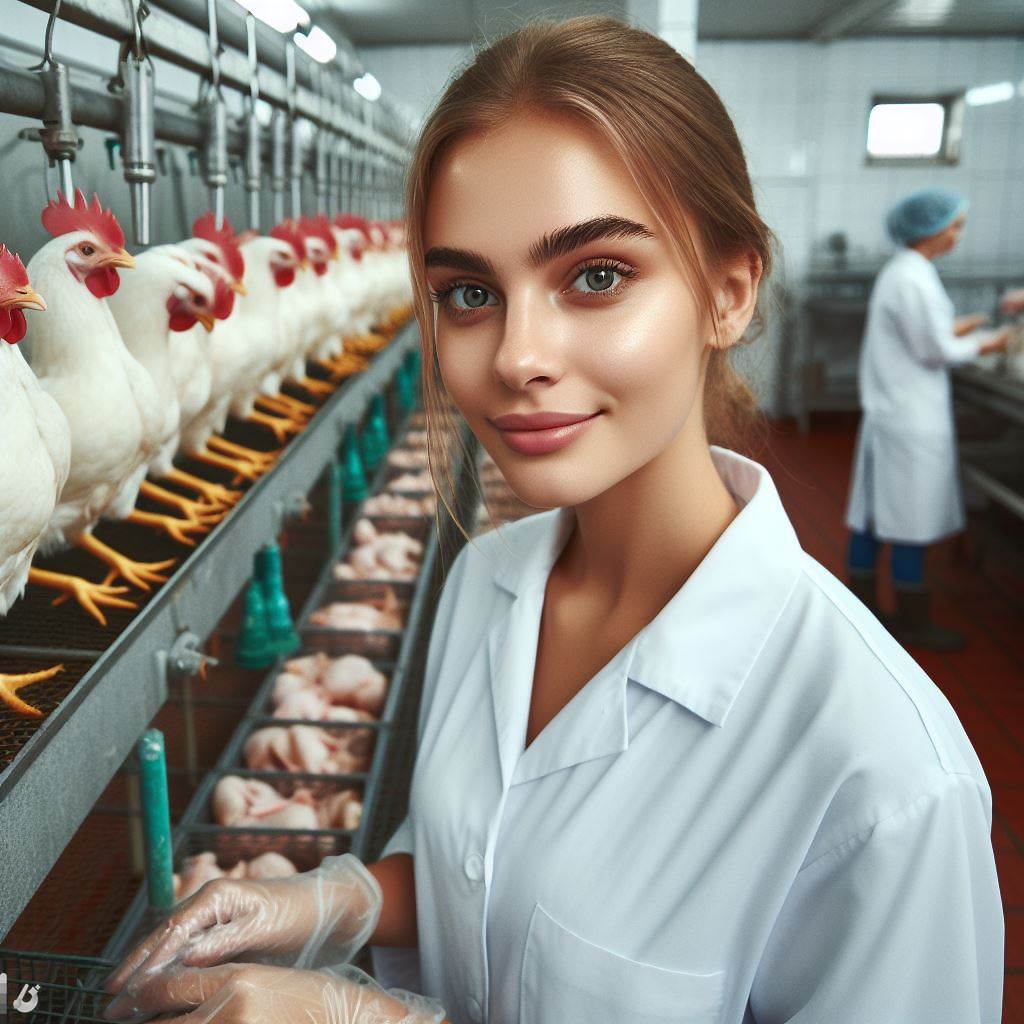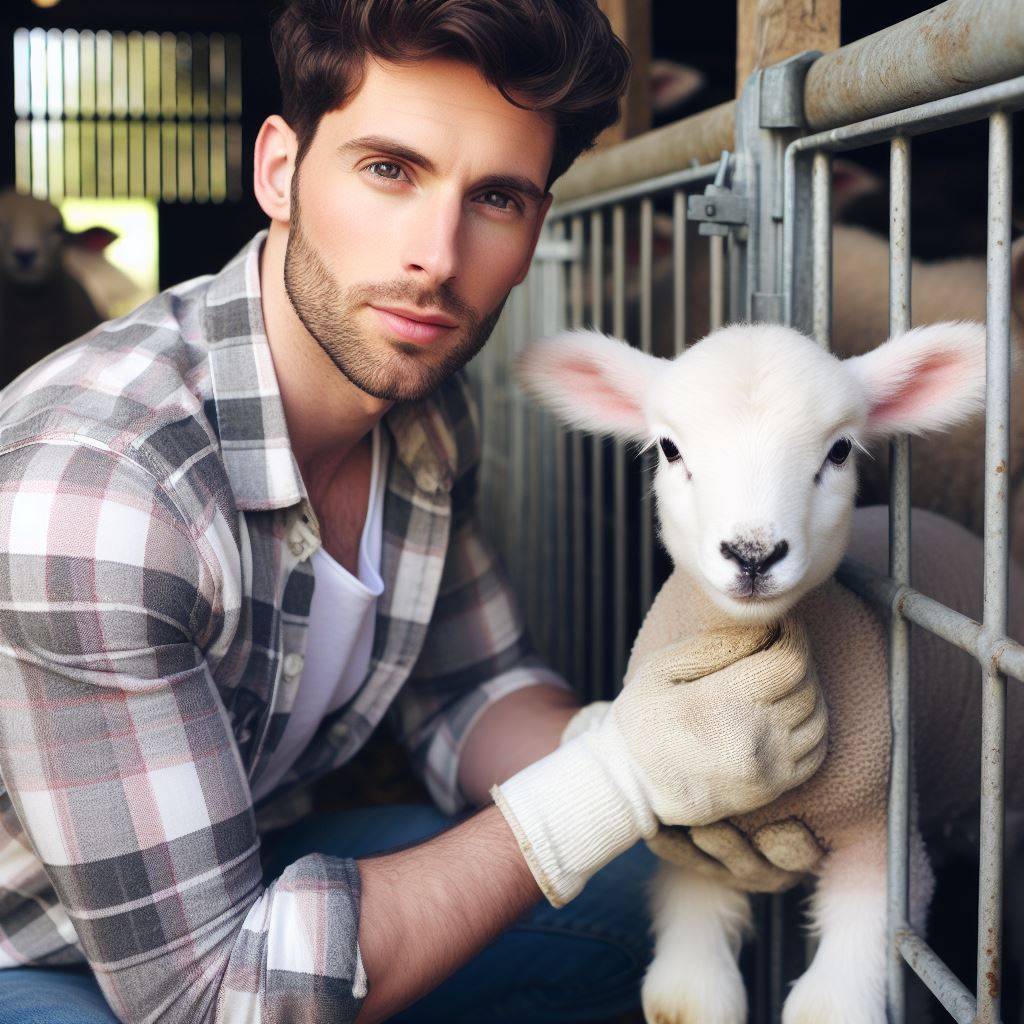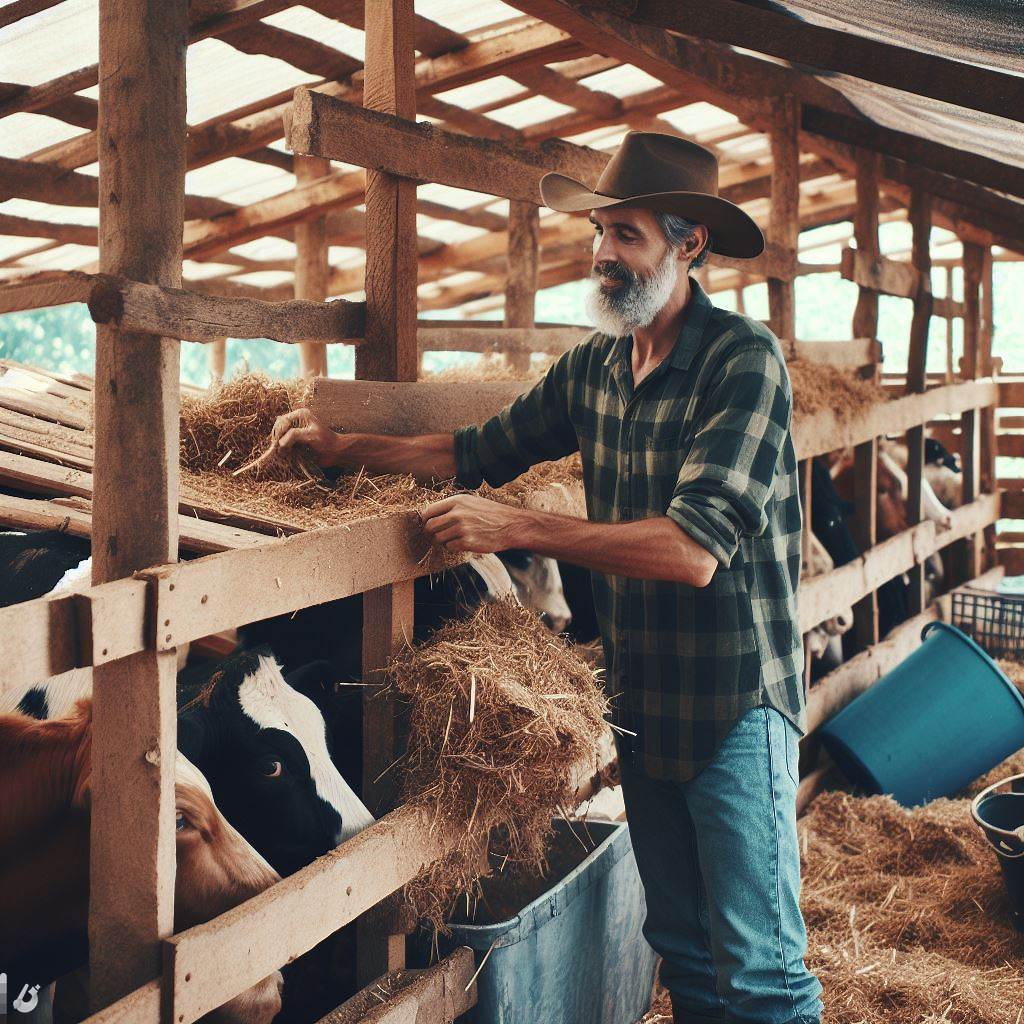Introduction
Shearing sheep is an important task that helps maintain the health and well-being of the animals.
In this blog post, we will discuss the various shearing techniques for sheep.
Importance of shearing sheep
Shearing sheep plays a crucial role in preventing overheating during warmer months.
It also helps to avoid skin infections and other health issues.
Overview of the blog post
This blog post will provide an overview of different shearing techniques, including blade shearing, machine shearing, and hand shearing.
Blade shearing is a traditional method that involves using long, sharp blades to remove the fleece.
Machine shearing is a faster and more efficient technique that uses electric clippers to shear the sheep.
Hand shearing requires skilled shearers who use hand-held clippers to carefully remove the fleece.
Each of these techniques has its own advantages and considerations, and we will explore them in detail to help you make an informed decision.
We will also discuss the best practices for preparing the sheep before shearing, including proper handling and restraint.
Furthermore, we will cover the importance of maintaining a clean shearing environment to prevent contamination and infection.
By the end of this blog post, you will have a comprehensive understanding of shearing techniques for sheep and be well-equipped to ensure the welfare of your flock.
Benefits of Shearing
The benefits of shearing sheep are numerous.
Shearing not only improves the health and hygiene of the sheep but also leads to better wool quality and market value.
Additionally, shearing helps prevent heat stress and flystrike, both of which can be detrimental to the health of the sheep.
Transform Your Agribusiness
Unlock your farm's potential with expert advice tailored to your needs. Get actionable steps that drive real results.
Get StartedImproved health and hygiene
One of the main advantages of shearing sheep is the improvement in their overall health and hygiene.
Sheep that are not sheared tend to accumulate dirt, sweat, and debris in their wool, which can lead to various skin conditions and infections.
Regular shearing helps to remove these impurities and keeps the sheep’s skin clean and healthy.
Better wool quality and market value
Not only does shearing improve the health of the sheep, but it also enhances the quality of their wool.
When the wool is left unshorn for extended periods, it becomes tangled and matted, making it difficult to process.
Shearing helps to maintain the integrity of the wool fibers, resulting in better-quality wool.
This, in turn, increases its market value, as high-quality wool is in demand for various industries, including textiles and fashion.
Prevention of heat stress and flystrike
Shearing plays a crucial role in preventing heat stress in sheep. Wool acts as an insulator, trapping heat close to the sheep’s body.
During hot weather, this trapped heat can cause heat stress, which can be life-threatening to the sheep.
By shearing the wool, the sheep are able to regulate their body temperature more effectively, reducing the risk of heat stress and related health issues.
Another significant benefit of shearing is the prevention of flystrike.
Flystrike occurs when flies lay their eggs in the soiled and damp wool of sheep.
The hatched larvae then feed on the sheep’s flesh, causing pain, infection, and potential death.
By shearing the sheep, the wool is kept clean and dry, minimizing the chances of flystrike and protecting the sheep from this distressing condition.
To summarize the benefits of shearing sheep:
- Shearing improves the overall health and hygiene of the sheep by removing dirt, sweat, and debris from their wool.
- Regular shearing helps maintain the quality of the wool, making it more valuable in the market.
- Shearing prevents heat stress by allowing the sheep to regulate their body temperature more effectively.
- By keeping the wool clean and dry, shearing reduces the risk of flystrike, a harmful condition caused by fly larvae infestation.
In essence, shearing sheep offers a range of benefits that positively impact the health, hygiene, wool quality, and market value of the sheep.
It is essential for farmers and shepherds to prioritize regular shearing to ensure the well-being and productivity of their flocks.
Read: Sheep Breeding 101: Best Genetic Practices
Preparation for Shearing
In order to ensure a successful shearing session for your sheep, it is crucial to properly prepare beforehand.
Let’s go through the necessary steps:
Selecting the right time for shearing
- Consider the climate and time of year: Choose a time when the weather is mild and dry, as wet conditions can be detrimental to both the sheep and the wool quality.
- Monitor the sheep’s body condition: Aim to shear them before the summer months when they can become too hot and prone to heat stress.
- Consult with a local sheep-shearing expert or agricultural extension office for specific recommendations based on your location.
Gathering necessary equipment (shears, blades, etc.)
- Invest in high-quality shearing equipment: Look for shearing shears, combs, and cutters specifically designed for sheep.
- Ensure that the blades are sharp and well-maintained to ensure a clean and efficient shearing process.
- Don’t forget to have additional supplies such as oil for lubricating the shears and securing tools to handle the fleece.
Setting up a safe and clean shearing environment
- Choose a well-lit and properly ventilated area for shearing, preferably indoors to avoid external disturbances.
- Ensure the shearing floor or table is clean, dry, and free from any sharp objects that may harm the sheep.
- Make sure the shearing area is spacious enough to maneuver around the sheep comfortably.
- Consider using restraining equipment like pens or fences to facilitate easier access to the sheep and minimize stress.
Proper handling and securing of sheep
- Gently handle the sheep to keep them as calm as possible. Avoid any sudden movements or rough handling.
- Use proper sheep handling techniques to safely secure them during the shearing process.
- Before shearing, check the sheep for any injuries, lumps, or tender areas that may require special attention.
- Secure the sheep in a position that allows easy access to their body without causing discomfort or distress.
- Consider using a belly strap or similar tool to help keep the sheep in place during shearing.
By following these preparation steps, you are setting yourself and your sheep up for a successful and stress-free shearing experience.
Remember to prioritize the well-being of your sheep throughout the entire process.
Read: Sheep & Goat Vaccination Schedules
Shearing Techniques
Proper shearing techniques are vital for both the welfare of the sheep and the quality of the wool harvested.
Showcase Your Farming Business
Publish your professional farming services profile on our blog for a one-time fee of $200 and reach a dedicated audience of farmers and agribusiness owners.
Publish Your ProfileWhether using blade shearing or machine shearing, certain steps must be followed to ensure a successful and efficient process.
Different methods of shearing (blade shearing, machine shearing)
- Blade shearing involves the use of sharp blades to remove wool from the sheep.
- Machine shearing utilizes electric clippers to efficiently shear large numbers of sheep.
Step-by-step guide for blade shearing
- Clean the sheep thoroughly before shearing to ensure a hygienic process.
- Inspect the sheep for any skin conditions or abnormalities that may require special care.
- Hold the sheep in a secure position using proper restraints to prevent injuries to both the shearer and sheep.
- Shear the sheep following the natural contour of the body, using smooth and efficient techniques.
- Take breaks as needed to maintain focus and prevent fatigue, ensuring the wellbeing of the sheep.
Step-by-step guide for machine shearing
- Prepare the sheep by cleaning them thoroughly to maintain hygiene during the shearing process.
- Inspect the sheep’s skin for any signs of irritation or issues that may require special attention.
- Hold the sheep in proper positions using restraints that ensure both safety and ease of shearing.
- Shear the sheep using the machine in a systematic manner, following the natural contours of the body.
- Pay attention to the blade’s condition, ensuring it remains sharp for efficient and effective shearing.
When blade shearing, it is important to start with a clean sheep.
This helps prevent contamination and ensures optimal hygiene.
Additionally, inspecting the sheep’s skin before shearing allows for early detection of any skin conditions that require special care.
When holding the sheep for blade shearing, secure and gentle restraints are necessary to prevent injuries to both the shearer and the sheep.
Proper positioning ensures accessibility to all areas of the body without causing discomfort or distress to the animal.
During the actual shearing process, the shearer must use smooth and efficient techniques, following the natural contour of the sheep’s body.
This not only ensures a tidy and visually pleasing result but also prevents unnecessary cuts or injuries.
Taking breaks when needed is crucial to maintain focus and prevent fatigue, benefiting both the shearer and the sheep.
In the case of machine shearing, the same preparations apply.
Cleaning the sheep thoroughly helps to maintain a hygienic environment, and inspecting the skin allows for early detection of any issues that may require special attention.
When holding the sheep for machine shearing, proper positioning and secure restraints are equally important.
This allows the shearer to work comfortably and safely, producing an even and efficient shearing result.
Throughout the shearing process, it is also crucial to pay attention to the condition of the blades.
Dull blades can lead to ineffective shearing and discomfort for the sheep.
Regularly checking the blade’s sharpness and replacing or sharpening as needed ensures optimal shearing efficiency.
By following these step-by-step guides and employing the appropriate shearing techniques, sheep can be efficiently and effectively sheared, promoting their health and well-being while producing high-quality wool.
Read: Sheep Farming: Basics & Innovations

Post-Shearing Care
After the shearing process is complete, there are several important steps to be taken in order to ensure the well-being of the sheep and the quality of the wool.
Handling of Wool
- Gently remove the sheared wool from the shearing area to prevent contamination.
- Sort the wool according to its quality and any specific requirements.
- Inspect the wool for any foreign matter, such as dirt or debris, and remove it.
- Properly store the sorted and cleaned wool to maintain its freshness and value.
Proper Cleaning and Storing of Shearing Equipment
- Thoroughly clean all the shearing equipment, including blades, combs, and cutters.
- Remove any accumulated wool fibers and grease to prevent corrosion and maintain performance.
- Use appropriate cleaning agents and follow manufacturer’s instructions for proper cleaning.
- Store the cleaned equipment in a dry and safe location to protect it from damage.
Treating and Bandaging Any Cuts or Injuries
- Examine the sheep for any cuts, nicks, or wounds that might have occurred during shearing.
- Clean the affected area gently with mild antiseptic soap and warm water.
- Apply an appropriate veterinary-approved ointment to facilitate healing and prevent infection.
- Carefully bandage any significant cuts or injuries to protect them from further damage.
Monitoring Sheep for Any Post-Shearing Issues
- Observe the freshly shorn sheep for signs of discomfort, stress, or health issues.
- Check for signs of overheating, such as excessive panting or difficulty breathing.
- Provide shade and access to water to help regulate the body temperature.
- Consult a veterinarian if you notice any abnormal behavior or signs of illness in the sheep.
Post-shearing care plays a crucial role in maintaining the health and well-being of the sheep and preserving the quality of the wool.
By following these guidelines, you can ensure proper handling of wool, maintain the cleanliness and functionality of shearing equipment, treat any cuts or injuries, and monitor the sheep for any post-shearing issues.
Sheep Feeding 101: Nutrition for Flock Health
Conclusion
Recap the importance of shearing sheep
In closing, shearing sheep is of utmost importance for their well-being.
Encouragement for proper shearing techniques for the well-being of sheep
Adopting proper shearing techniques is essential for sheep welfare.
Skillful shearing ensures the removal of excess wool without causing stress or injury.
Regular, humane shearing promotes hygiene, prevents overheating, and contributes to overall sheep health, emphasizing responsible and compassionate farming practices.
Proper shearing techniques should be encouraged to maintain their health and happiness.
The benefits of regular shearing
Regular shearing brings numerous benefits, such as preventing overheating and promoting better hygiene.
It promotes optimal wool quality, prevents overheating during warmer seasons, and reduces the risk of skin infections.
Additionally, it improves overall hygiene, making it easier to monitor the sheep’s health and enhances the efficiency of wool harvesting processes.




